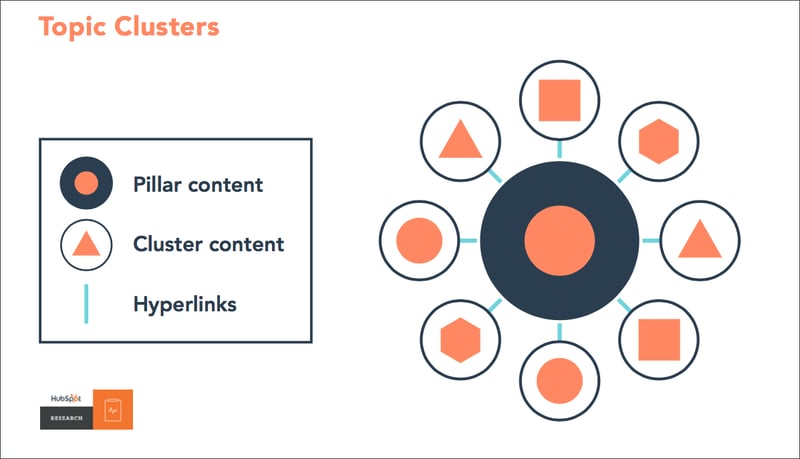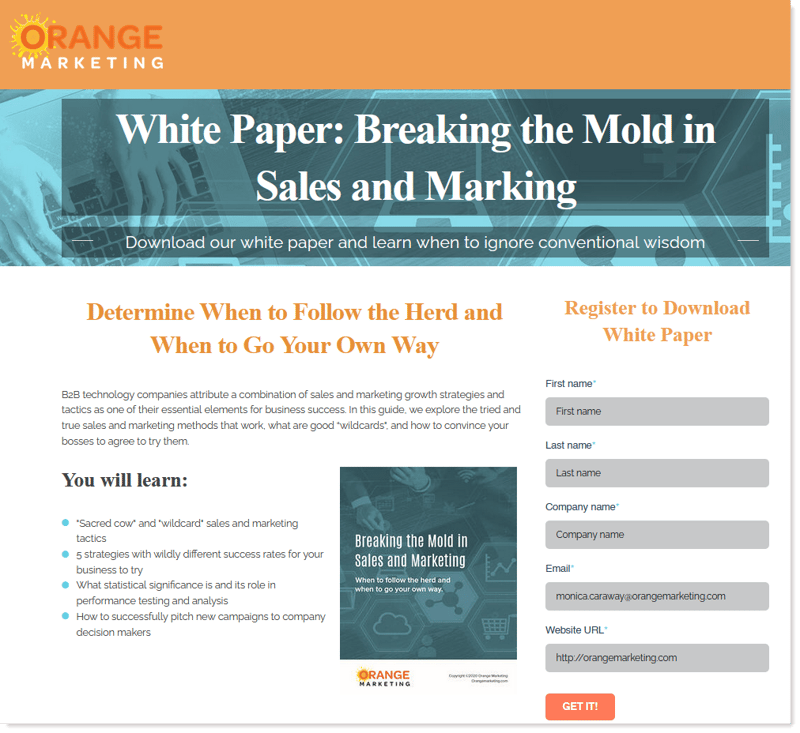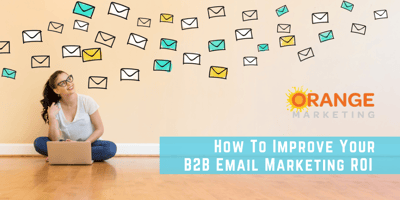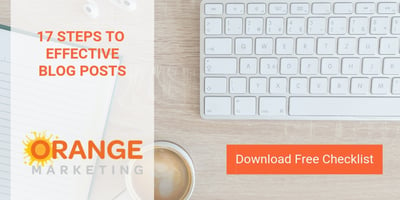4 min read
Don’t Publish and Forget: How You Can Repurpose Four Types of Content
![]() Orange Marketing
:
April 18, 2022
Orange Marketing
:
April 18, 2022
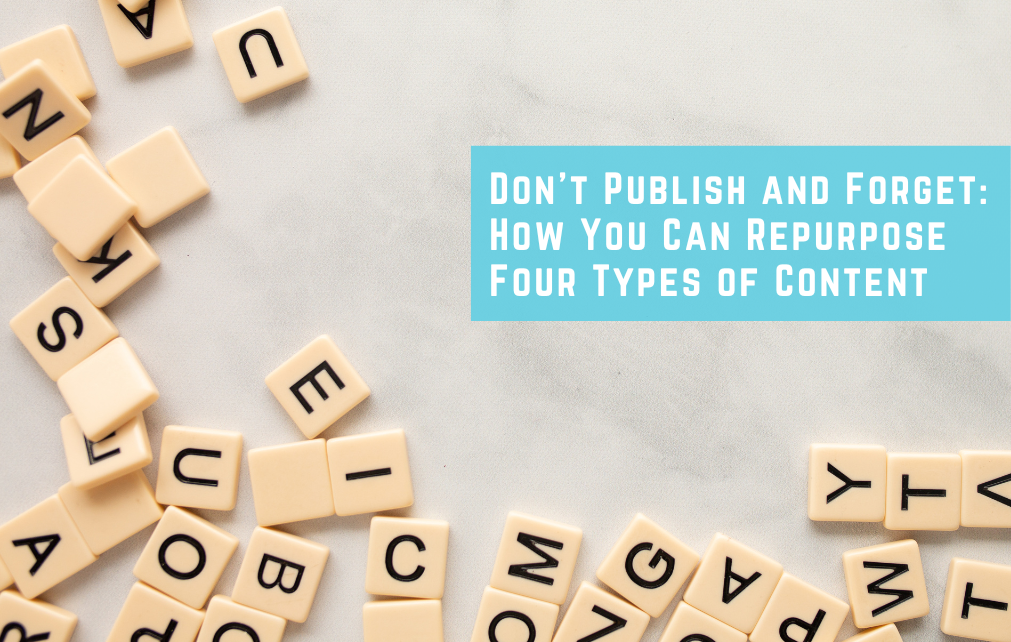
One mistake companies often make is treating their content as a single-use piece without considering the time and money spent creating it. This post will explore strategies to maximize return on this investment by turning individual content pieces into many different assets.
1. Blog Posts
Let’s start with the most common type of marketing content: the blog post.
Except for blogs that promote a time-sensitive event like a webinar, conference, or product launch, every blog post you publish should get more exposure than a day-of social media and a one-time run in your marketing newsletter. When you commission a blog, you should plan for how it will be used and distributed medium- and long-term.
Evergreen posts can be periodically reshared on social media and republished every few months with minor revisions, which also helps improve search engine rankings. You can also use different elements of your post each time you share it on social media, increasing the variety of your social content.
Additionally, blog posts can serve as the building blocks for longer-form assets. Once you have several posts about a topic – for example, “managed services” – you can eventually combine them into a pillar page. Just add some new content when combining blogs to avoid duplicate content issues (an SEO no-no). These pillar pages can also serve as other assets.
2. Pillar Pages
How you organize your content is incredibly important. We’re big fans of the hub-and-spoke approach/topic cluster strategy because it makes it easier to rank high on Google for strategic keywords.
Long-form pillar pages form the “hub” and can drive significant value once they start ranking, but they require considerable effort to create. They can be expensive (unless you’re assembling them from existing content, as mentioned above).
If you create an entirely original pillar page, you can break it down into a series of stand-alone blogs for each of its major sections. Creating related blogs to your pillar page simultaneously allows you to get more value from the original piece of content and builds elements of cluster content to expand upon your topic. Just be sure to add some additional copy, such as a new intro and outro, to avoid the same potential duplicate content issue that you may have if you combine blogs into a pillar page.
In most cases, pillar pages can easily be converted into downloadable content, such as an ebook, further increasing the return on your investment. Depending on your content strategy, pillars can also serve as the basis for a webinar, podcast episode, YouTube video – or even a post series. Presentations and slideshows are additional ways to repurpose pillar page content.
3. Gated Assets
Like pillar pages, your gated assets can take time and money to organize. Fortunately, as with other asset types, there are multiple options for how you can repurpose these to maximize the return on your investment.
Long-form assets like ebooks and some whitepapers can be converted into pillar pages and broken down into multiple blog posts, with all of the social media content opportunities that go with that approach. These can also link back to the landing page gated asset, increasing the number of people who see that page and could download the PDF.
Shorter assets, like case studies, can be turned into stand-alone blogs in addition to the promotional blog post you published alongside the downloadable asset (you did publish a promotional post, right?).
Like pillar pages, case studies can also serve as the basis for audio and video content.
4. Audio and Video Content
Unless you’re a natural at being on camera and have an established audience, audio, and video content will typically take the most to create and promote. Even if you’re using an existing piece of content as the basis for the topics you’ll be discussing, such as a pillar page, you still have to spend additional time laying out your thoughts.
Then there’s the “performance” aspect. While the Zoom age has forced many to learn how to become at least halfway decent on camera, attending remote meetings is still not quite the same as doing a YouTube video or even presenting a webinar.
If you’re going to start a podcast, invest in a good microphone and learn how to use an editing app. For videos (including webinar presentations), you’ll also want a camera and a ring light. With a good tripod mount and an app like EpocCam, you can even use your phone as the camera.
If you’re not good on camera or have a voice for silent film, find someone on your team who is. You may also consider hiring an editor to make the final product high quality.
Given all of the effort, you’ll put into creating a piece of A/V content, you'll want to get secondary content out of each one – and there are plenty of options.
In the case of webinars, make sure your webinar gets recorded. You can turn that recording into a separate gated asset, a published video, or a podcast episode. Alternatively, you can transcribe the recording and make it into a long-form PDF downloadable. Depending on the subject matter, it may make sense to do both.
For example, as seen below, one of our co-founders, Kelsey Galarza, participated in a webinar. We had that recording transcribed and then quickly turned the bulk of the copy into an ebook for people to download.
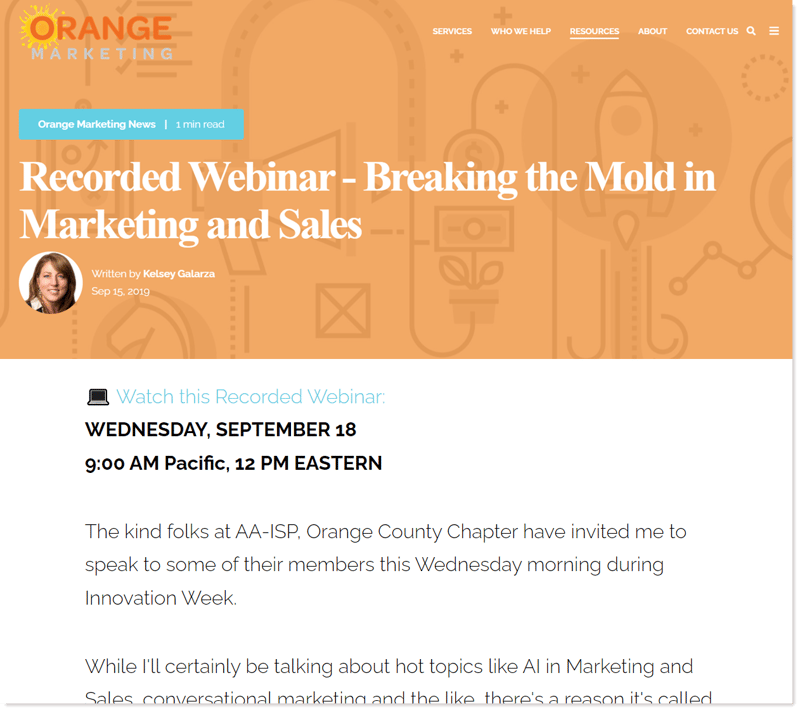
You can also turn transcripts of your podcast episodes or YouTube videos into downloadable PDFs. With editing, transcripts can also be used as blogs or pillar pages, depending on the length of the source content.
In many cases, videos can also be converted into audio-only content, while some audio-only content is released as a video with the addition of minor graphical elements. This way, you effectively get at least two pieces of content from a single effort. Because social platforms don’t support audio-only content, you’ll want to convert your podcasts into video formats to be able to share clips on your social media channels in addition to the full episode or video.
With the right strategy, you can get several pieces of gated and ungated content out of one video, webinar, or podcast episode that you can use to drive traffic for weeks or even months. Repurposing content multiple times significantly increases your ROI and makes it easier to justify the up-front effort.
How do I Gate Content?
Once you decide if a content piece should be gated or not (i.e. asking for a reader's email or other basic information in exchange for a marketing asset like a PDF download), you need to then effectively entice readers to give you that information.
To help you do just that, we have created The Ultimate Landing Page Checklist. This resource presents our years of experience creating HubSpot landing pages for clients across industries. This checklist will walk you through when you should gate content and how best to do so.
Additional Resources
Focus Content to Hook Leads - You Only Have Seconds!
